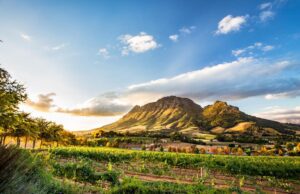How can environmental subsidies be used to ensure sustainable development in South Africa?
Environmental sustainability is a pressing global concern, and nations worldwide are grappling with ways to balance economic development with environmental protection. In the case of South Africa, a country known for its rich biodiversity and unique ecosystems, achieving sustainable development is of paramount importance.
This article explores the potential of environmental subsidies as a tool to ensure sustainable development in South Africa.
The Challenges Faced
South Africa is a land of incredible natural beauty, boasting diverse landscapes, abundant wildlife, and a wealth of natural resources. However, the country faces several environmental challenges, including deforestation, water scarcity, air pollution, and the impact of climate change. Balancing these challenges with the need for economic growth is a complex endeavour.
What is Environmental Subsidies?
Environmental subsidies are financial incentives provided by governments to encourage environmentally friendly practices and industries. They can take various forms, such as tax breaks, grants, or subsidies for renewable energy projects. These incentives aim to promote activities that reduce environmental harm and promote sustainability.
The Current Environmental Situation in South Africa
Before delving into the potential of environmental subsidies, it’s essential to understand the current state of the environment in South Africa. The country faces numerous environmental issues, including:
Deforestation: The clearing of forests for agriculture and urban development threatens biodiversity.
Water Scarcity: Many regions in South Africa experience water scarcity, impacting both people and agriculture.
Air Pollution: Rapid industrialization has led to increased air pollution levels in major cities.
Climate Change: South Africa is susceptible to the adverse effects of climate change, including droughts and extreme weather events.
To address these environmental challenges, South Africa must prioritize sustainable development.
Sustainable development seeks to meet the needs of the present without compromising the ability of future generations to meet their own needs. It involves achieving a balance between economic growth, social development, and environmental protection.
How Can Environmental Subsidies be Used to Ensure Sustainable Development in South Africa
There are several types of environmental subsidies that South Africa can utilize:
Renewable Energy Incentives: Subsidies for solar, wind, and hydropower projects can accelerate the transition to clean energy sources.
Sustainable Agriculture Support: Farmers practicing sustainable agriculture can receive financial support to reduce their environmental footprint.
Waste Management Initiatives: Encouraging recycling and responsible waste management through subsidies can reduce pollution.
Environmental subsidies offer several advantages:
Stimulating Green Industries: Subsidies can foster the growth of green industries, creating jobs and economic opportunities.
Reducing Greenhouse Gas Emissions: Incentives for clean energy and transport can contribute to lower carbon emissions.
Preserving Ecosystems: Supporting conservation efforts through subsidies helps protect South Africa’s unique biodiversity.
How Can Environmental Subsidies be Used to Ensure Sustainable Development in South Africa – Challenges
Economic Considerations
Allocating funds for subsidies may strain the national budget, requiring careful financial planning.
Political Factors
The success of environmental subsidies often depends on political will and stability.
Public Awareness
Public understanding and support for environmental subsidies are crucial for their effectiveness.
Recommendations for South Africa
To harness the potential of environmental subsidies for sustainable development, South Africa should consider the following:
Policy Reforms
Review and reform existing policies to accommodate environmental subsidies and encourage sustainable practices.
Public Awareness Campaigns
Educate the public about the importance of environmental subsidies and their role in sustainable development.
Collaboration with International Organizations
Collaborate with international organizations and seek financial support for environmental initiatives.
Examples of Sustainable Development South Africa
All of these relate to how can environmental subsidies be used to ensure sustainable development in South Africa.
Sustainable development in South Africa involves various initiatives and practices aimed at balancing economic growth, social equity, and environmental conservation. Here are some examples of sustainable development efforts in South Africa:
Renewable Energy Projects:
South Africa has made significant investments in renewable energy sources, such as wind and solar power. The Renewable Energy Independent Power Producer Procurement Program (REIPPPP) has led to the development of numerous wind and solar farms, reducing the country’s reliance on fossil fuels and lowering greenhouse gas emissions.
Biodiversity Conservation:
South Africa is known for its rich biodiversity, including iconic species like rhinos and elephants. Conservation efforts in national parks and private game reserves, along with anti-poaching measures, aim to protect these species and their habitats.
Water Management:
South Africa faces water scarcity challenges, and sustainable water management is crucial. Initiatives like the Working for Water program focus on clearing invasive plant species from water catchment areas, while also creating employment opportunities for local communities.
Sustainable Agriculture:
Practices like conservation agriculture and organic farming are promoted to reduce the environmental impact of agriculture while ensuring food security. Initiatives like the National Policy on Food and Nutrition Security aim to promote sustainable farming practices.
Eco-Tourism:
South Africa’s tourism industry emphasizes eco-tourism, which supports conservation efforts while providing economic benefits to local communities. National parks, like Kruger National Park, integrate tourism with wildlife conservation.
Green Building and Infrastructure:
The Green Building Council South Africa promotes sustainable building practices, encouraging energy-efficient and environmentally friendly construction. Projects like green roofs and renewable energy integration are becoming more common.
Sustainable Transport:
Initiatives in major cities, like Cape Town and Johannesburg, focus on public transportation improvements, cycling infrastructure, and electric vehicle adoption to reduce carbon emissions from transportation.
Waste Management:
Recycling programs and waste-to-energy projects are being implemented to reduce landfill waste and promote a circular economy. Extended Producer Responsibility (EPR) programs are also being considered to hold manufacturers responsible for the end-of-life disposal of their products.
Social Equity:
Initiatives to address poverty and inequality are essential for sustainable development. Programs like Black Economic Empowerment (BEE) aim to redress historical imbalances and promote economic inclusion for previously disadvantaged communities.
Education and Awareness:
Education campaigns and environmental awareness programs are crucial for encouraging sustainable practices among South Africans. Various NGOs and government agencies work to educate the public about conservation, recycling, and sustainable living.
Conclusion
In conclusion to how can environmental subsidies be used to ensure sustainable development in South Africa. environmental subsidies can play a pivotal role in South Africa’s journey towards sustainable development.
By strategically implementing subsidies, addressing challenges, and drawing inspiration from global success stories, South Africa can protect its natural heritage, mitigate the effects of climate change, and create a more sustainable future for its people. Achieving this balance between economic growth and environmental preservation is not only possible but essential for the well-being of current and future generations.

